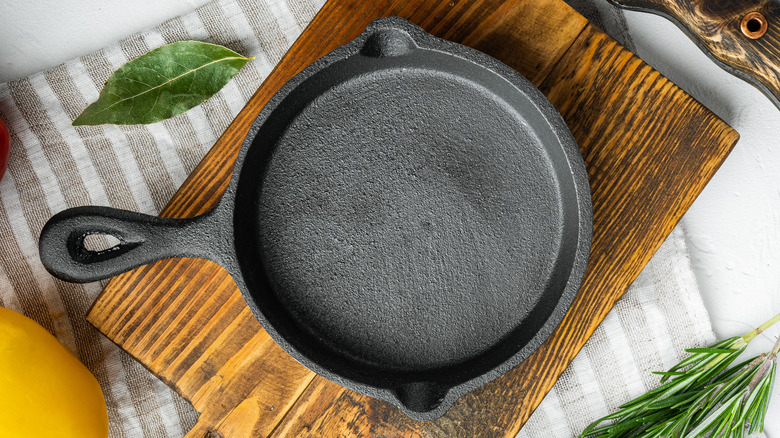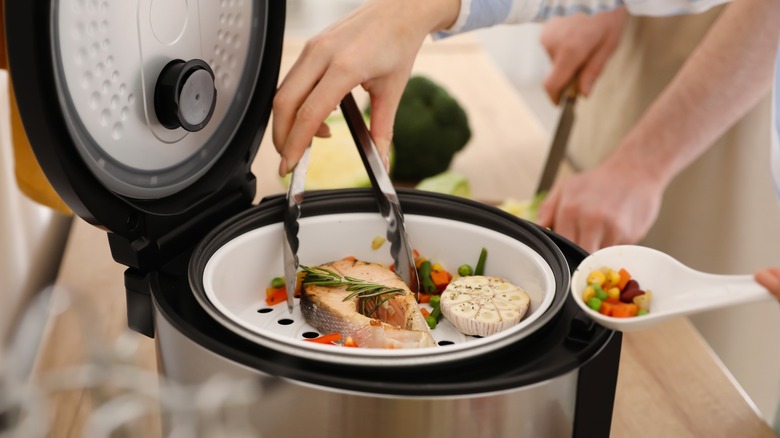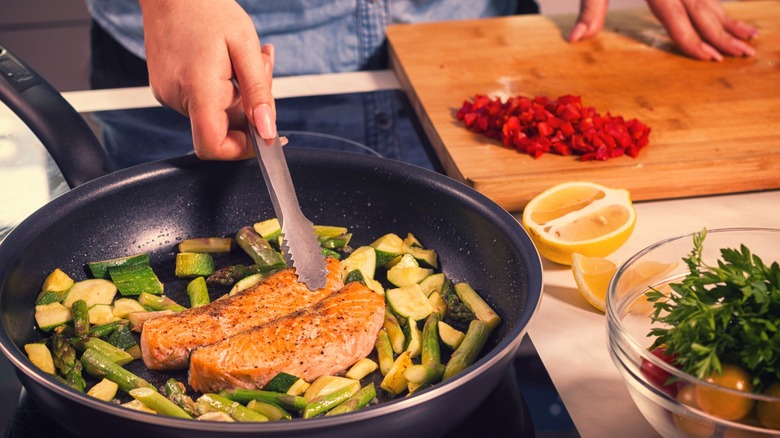The One Protein Your Cast Iron Pan Just Can't Handle
When it comes to cooking delicate fish, such as flaky white varieties like cod or otherwise tender seafood, choosing the right cookware and utensils can make all the difference. While cast iron pans are known for their versatility and superior heat retention, they may not be the ideal choice for fish. Flaky fish requires an equally gentle touch, and here's why it's best to explore alternative cooking methods rather than subjecting them to the intense heat and potential pitfalls of cast iron.
Fish varieties like sole, halibut, and flounder possess a tender texture and subtle flavors that require careful handling. These fish are prone to overcooking, easily losing their texture, and becoming dry or tough if exposed to excessive heat. To maintain their pristine qualities (and ensure they don't fall apart in your pan), it's crucial to choose cookware and tools that allow for precise control over temperature and a gentle cooking environment. Enter the stainless steel and non-stick pans, your friends for finicky fish.
How to best cook delicate fish
To ensure fish is able to let its natural flavors and texture shine, alternative cooking methods offer more control and finesse. Poaching delicate fish in a simmering liquid, such as broth or stock, preserves its tenderness while infusing it with subtle flavors. This low-temperature cooking method ensures the fish cooks gently and evenly without the risk of overcooking. Steaming fish in a covered pan or a dedicated steamer allows for precise control over the cooking temperature. This gentle method locks in moisture and ensures the fish remains tender throughout the cooking process while retaining its shape.
Opt for non-stick pans or pans with a stainless-steel or copper core when pan-searing fish. These pans provide excellent heat distribution while minimizing the risk of sticking and preserving the frangible texture of the fish. Fillets and even whole fish can be baked or roasted to perfection. This method allows for gentle and even heat distribution, ensuring that the fish cooks uniformly without drying out or falling to pieces. These cooking techniques simply aren't possible in a cast iron skillet.
Not all fish are created equal
Some fish and seafood, however, can handle the heat. Think salmon and shrimp — especially the heartier or shell-on Madagascar types. While these are safe to use on cast iron, they should be watched and still treated with a careful hand. For instance, moving salmon around too much on a cast iron pan or using far too little oil is a surefire way to end up with a flakey, smokey mess instead of a perfectly browned, medium-rare filet of fish. Unless cast iron is all you're working with, it's a good idea to still opt for stainless steel or even non-stick for these heartier seafood types as well.
What about cast iron cooking at low temperatures? As a rule of thumb, unless you can get the surface of your meat to brown, which isn't possible at low temperatures, it isn't going to release from the cast iron. Moreover, the reason cast iron is able to hold high temperatures so well is due to the fact that iron is really a poor conductor. It takes a long time to warm up, but then it holds onto that temperature, meaning the entire pan or skillet heats and then cooks the food, rather than just the spot on the direct heat (ie, the burner). That's great news for frying or roasting potatoes, but terrible for fish that need delicacy and a steady hand. Basically, when it comes to fish and cast iron cooking, science pretty much says "no."



